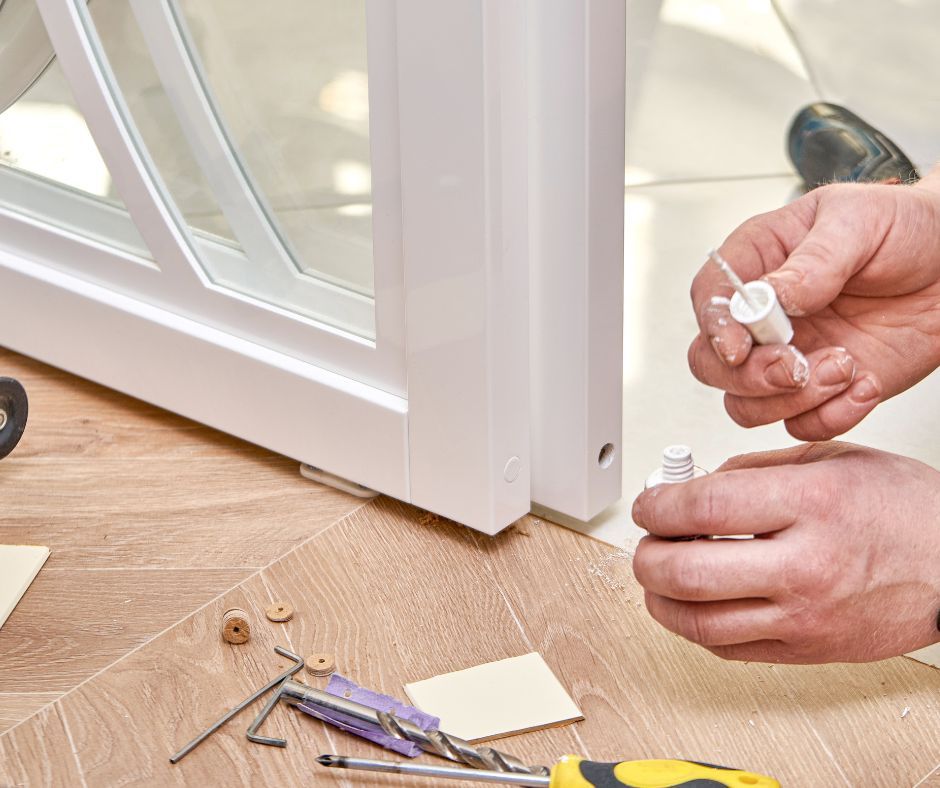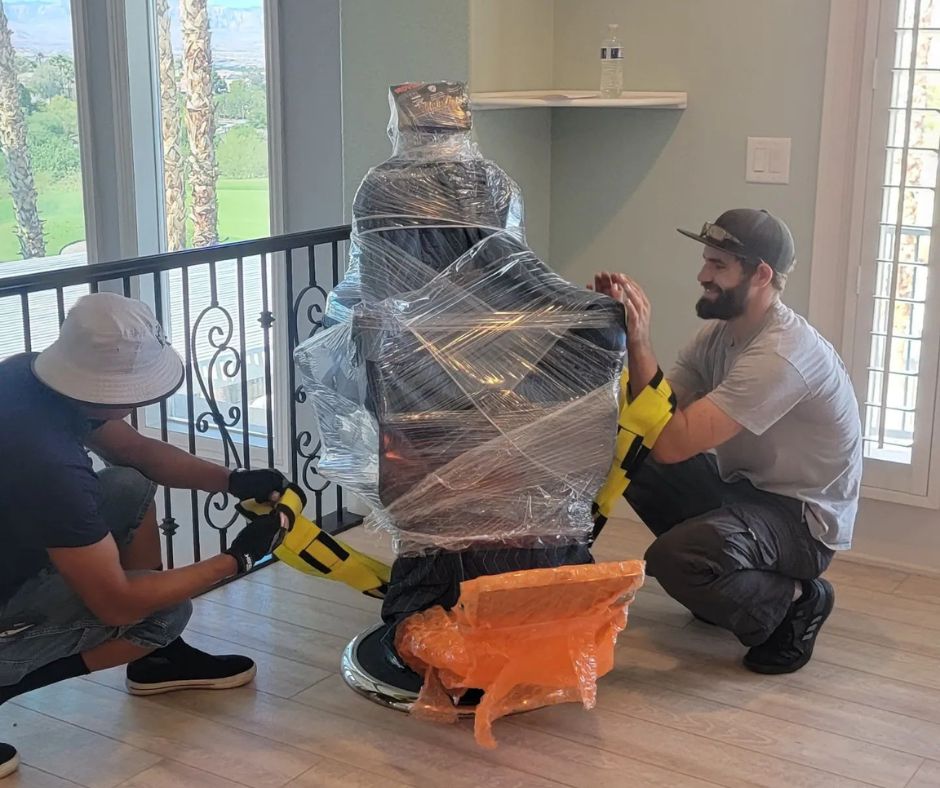How to Disassemble Furniture When Moving: Protecting Your Precious Pieces

Moving to a new address can be both exciting and daunting. Moving heavy furniture is one of the most challenging tasks. Whether you're flexing your DIY muscles or seeking professional help, knowing how to disassemble furniture for a move is crucial. This step-by-step guide will walk you through the process, ensuring your furniture arrives perfectly.
Why Disassemble Furniture When Moving?

Disassembling furniture can significantly reduce transportation costs and minimize the risk of property damage or personal injuries. Here's why:
- Cost-Effectiveness: Smaller items take up less space in a moving truck, potentially reducing expenses.
- More accessible Transportation: Bulky furniture can be challenging to maneuver through doorways and hallways or load onto moving vehicles.
- Minimizing Risk: Disassembling fragile furnishings reduces the chance of permanent damage during transit.
Preparing for Furniture Disassembly
Assessing the Need for Disassembly
Before breaking down furniture, measure your furniture items and the entry and exit points of your old and new homes. Use a measuring tape to ensure larger pieces like couches and wardrobes fit through doorways and hallways.
Tools and Supplies You'll Need
Disassembling furniture can be a DIY project or part of a moving process. You'll need the right tools and supplies to do it effectively and safely. The specific tools you require will depend on the type of furniture you're disassembling, but here's a general list of items that can be useful:
Screwdriver Set:
- Phillips-head screwdriver
- Flathead screwdriver
- Allen wrench or hex key set (for furniture with Allen screws)
Adjustable Wrench or Pliers:
- These can be handy for nuts, bolts, or other fasteners.
Rubber Mallet:
- Use this for gently tapping and dislodging parts without causing damage.
Hammer:
- For heavier or stubborn joints, a hammer may be necessary.
Tape Measure:
- It helps you measure and mark components for accuracy when reassembling.
Electric Drill/Driver:
- If you have a lot of screws, using an electric drill/driver can save time.
Safety Gear:
- Safety goggles to protect your eyes from debris.
- Work gloves to protect your hands from sharp edges and splinters.
Furniture Dolly or Hand Truck (for larger pieces):
- These help move heavy or bulky furniture pieces.
Ziplock Bags or Small Containers:
- Use these to organize and store screws, bolts, and small parts.
- Label the bags or containers to identify which piece of furniture they belong.
Furniture Sliders or Moving Blankets:
- Sliders can help move heavy furniture across the floor without scratching it.
- Moving blankets help protect disassembled parts during transport.
Furniture Straps or Ratchet Straps:
- These are used to secure disassembled pieces for transport.
Furniture Assembly Instructions:
- Keep these handy for reference when reassembling the furniture.
Plastic Zip Ties or Velcro Straps:
- These can help bundle and secure loose cords, cables, or components.
Small Flashlight:
- Useful for better visibility in tight or dark spaces.
Plastic Bags or Plastic Wrap:
- Wrap delicate components or fabric parts in plastic to protect them.
Pen and Notepad:
- Make notes about which parts go where or any specific instructions.
Pre-Disassembly Checklist
- Instruction Manuals: Refer furniture manuals or online tutorials for guidance.
- Safety Precautions: Ensure you have the correct tools to avoid any injuries.
- Labels: Use label stickers to mark each part, making reassembly easier at your new address.
Step-by-Step Guide to Disassembling Common Furniture Types
Beds
- Prepping for Disassembly: Remove all bedding and cushions. Ensure all items are removed for more extensive beds with drawers and pack storage.
- Frame Disassembly: Unscrew or unbolt the bed frame. Keep all screws and bolts in sealable plastic bags.
- Headboard and Footboard: If attached, remove these next.
Sofas and Couches
- Cushions: Remove all couch cushions.
- Legs: Turn the sofa upside down and unscrew the furniture legs.
- Frame: If your sofa has a reclining feature or is a sectional, follow the furniture assembly instructions to disassemble further.
Desks and Tables
- Drawers: Remove all drawers and pack the contents separately.
- Legs: Unscrew the legs is detachable.
- Top: For tables with glass tops, carefully remove the mirrors and glass and wrap them in furniture blankets.
Wardrobes and Dressers
- Doors: Remove any entries by unscrewing the hinges.
- Drawers: Slide out all drawers and pack the contents separately.
- Shelves: If your wardrobe has removable shelves, take them out.
DIY vs. Hiring Professionals

While taking apart furniture can be a cost-saving measure, it's essential to weigh the benefits of DIY against hiring professional packers or a full-service moving company. Professionals come equipped with special tools and expertise, especially for glued or nailed furniture, ensuring no small fastening elements are lost or damaged.
DIY Furniture Disassembly
Pros:
- Cost-Effective: One of the primary advantages of DIY furniture disassembly is cost savings. You won't have to pay for professional services, which can be particularly beneficial if you're on a tight budget.
- Personal Satisfaction: Successfully disassembling and reassembling furniture independently can be incredibly satisfying. It allows you to take pride in your DIY skills and enhances your confidence in tackling similar projects.
- Flexibility: You can work at your own pace, and there's no need to schedule appointments or wait for professionals to arrive. DIY disassembly allows you to adapt to your timeline.
- Learning Experience: If you enjoy hands-on projects and learning new skills, DIY furniture disassembly can be an excellent opportunity to gain experience in furniture assembly and disassembly techniques.
Cons:
- Time-Consuming: Disassembling furniture can be time-consuming, especially if you're unfamiliar with the process. You might spend more time than you initially anticipated.
- Risk of Damage: Inexperienced DIYers may accidentally damage furniture during disassembly. This could lead to additional repair or replacement costs.
- Tools and Equipment: You'll need the right equipment to disassemble furniture safely and efficiently. If you still need them, this could be an added expense.
- Limited Warranty: Some furniture warranties may be voided if the furniture is disassembled by someone other than a professional.
Hiring Professionals for Furniture Disassembly
Pros:
- Expertise: Professional furniture disassembly experts have the knowledge and experience to efficiently disassemble and reassemble furniture without causing damage. They are skilled in handling various types of furniture.
- Time-Saving: Hiring professionals can save you significant time. They can complete the disassembly process quickly, allowing you to focus on other aspects of your move or renovation.
- Reduced Risk: Professionals are less likely to make mistakes that could damage your furniture. Their expertise minimizes the risk of costly repairs.
- Warranty Protection: Many furniture professionals offer warranties or guarantees. This means they are responsible for repairs or replacements if any damage occurs during disassembly or reassembly.
Cons:
- Cost: Professional furniture disassembly services come at a price which can be substantial, depending on the complexity of the project and your location.
- Scheduling: You must coordinate with the professionals' schedule, which may only sometimes align with your preferred timeline.
- Limited DIY Experience: If you enjoy DIY projects and want to learn new skills, hiring professionals may deprive you of gaining hands-on experience.
Reassembly Tips
- Keep Track: Ensure all screws, bolts, and other parts are labelled correctly in Ziploc bags.
- Follow Manuals: Use the furniture manuals or online guides for easy assembly.
- Safety: Avoid rushing to prevent any damage to the furniture or injuries.
FAQs
- What is the best way to disassemble furniture?
- Using the right tools, following the furniture disassembly guide, and seeking help if unsure.
- How do I keep track of screws and small parts?
- Use sealable plastic bags and label stickers.
- Is it worth disassembling furniture for a short-distance move?
- It depends on the furniture items and the moving truck size. Bulky items still need disassembly for easier maneuvering.
Whether you're a DIY enthusiast or prefer professional assistance, knowing how to disassemble furniture when moving is invaluable. With the right tools, some prep work, and this comprehensive guide, you'll be ready to tackle your move head-on, ensuring all your furniture pieces arrive at your new home in perfect condition.
Remember, the key is in the details. Proper labeling, careful packing, and following instructions can distinguish between a stressful move and a smooth transition to your new home. Safe moving!


